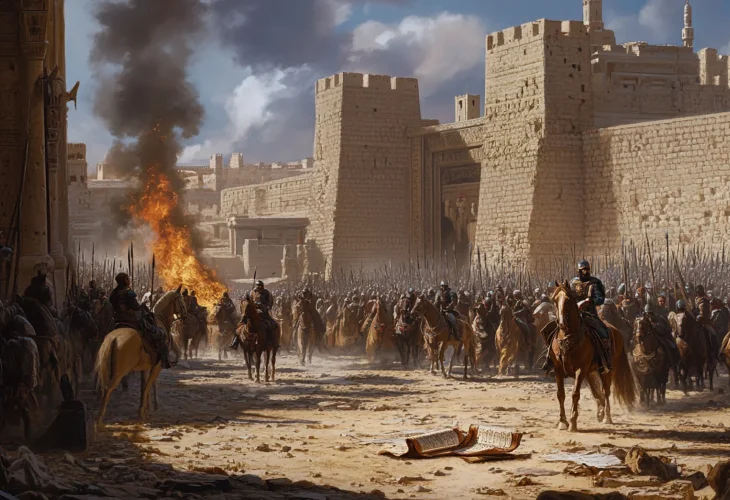History and Archaeology
Muhammad’s Claim to Abraham’s Legacy and the Jews of Arabia
Muhammad saw himself as Abraham’s heir through Ishmael, demanding Jewish recognition. Their refusal sparked a decisive and violent chapter in history

For many years, Arab tribes lived throughout the Arabian Peninsula. While much of the civilized world had moved away from idol worship, many Arabs still clung to a primitive pagan culture. In Islam, this period is called the “Jahiliyyah,” meaning “The Time of Ignorance.” Some tribes were more refined, some less. A few identified themselves as descendants of Ishmael and practiced circumcision, while others like the Nabataeans avoided idol worship altogether. But most tribes rejected spiritual values, focusing instead on idols, wealth, and personal gain, until Muhammad appeared.
Muhammad ibn Abdullah was born in Mecca around 570 CE. At the age of 40, he began preaching against idolatry, criticizing the greed and materialism of Mecca’s people. In the beginning, his message met little success, and the Meccans sought to kill him. Muhammad fled to Yathrib, later renamed Medina, meaning “City of the Prophet.”
In Mecca, his role was more that of a moral teacher than a founder of a new religion. But in Medina, with growing support, his message shifted. He began to create a complete theological framework for what would become Islam. The well-known Islamic scholar Ignaz Goldziher described this change: “In a different environment than Mecca, Muhammad’s prophetic role evolved. Now he wanted to be seen as restoring the religion of Abraham, which had been corrupted over time.”
From this perspective, Muhammad viewed himself as the direct heir to Abraham’s faith, with Jews and Christians having strayed from the truth. Believing this, he approached the three Jewish tribes living in Medina—the Banu Nadir, Banu Qaynuqa, and Banu Qurayza and calling on them to join him and accept his reforms. When they refused, the Banu Qaynuqa were expelled to Syria, and the Banu Nadir were sent to Khaybar.
Later, the Quraysh tribe from Mecca attacked Medina, laying siege to the city. After the siege failed, Muhammad accused the Banu Qurayza of aiding the Quraysh. The Jews hoped for expulsion like the other tribes, but Muhammad demanded unconditional surrender. When they gave in, his forces executed all the men and divided the women, children, and possessions among the Muslim fighters.
Afterward, Muhammad made peace with the Quraysh through the Treaty of Hudaybiyyah, freeing him to turn his attention to the Jews of Khaybar. Jews had lived in Arabia since Roman times and were known as skilled warriors. In Khaybar, they lived in strong fortresses atop the mountains, wealthy and respected, and feared by neighboring Arab tribes.
Muhammad sent them a letter inviting them to accept his message of monotheism, claiming that the Torah itself hinted at his prophetic mission. He promised that if they could not find such signs, he would not force them to believe. He invited 30 Jewish leaders from Khaybar to a “peace meeting” without weapons. But when they arrived, armed Muslims ambushed and killed them. Muhammad’s forces then besieged Khaybar’s fortresses. Although the Jews fought bravely, they were eventually defeated. The survivors were allowed to remain in the land only if they gave half of their agricultural produce to the Muslims.
In Muhammad’s understanding, he was reclaiming Abraham’s faith, not as an equal brother to Isaac, but as Ishmael’s heir, holding the final word. He rejected the version of Abraham’s faith passed down through Isaac, instead placing Ishmael as the chosen son. When the Jews refused to acknowledge his authority, he reacted with force. This chapter in history ended not through dialogue, but through the sword, marking a turning point in the long and complex relationship between the descendants of Isaac and the descendants of Ishmael with the rise of Islam.

